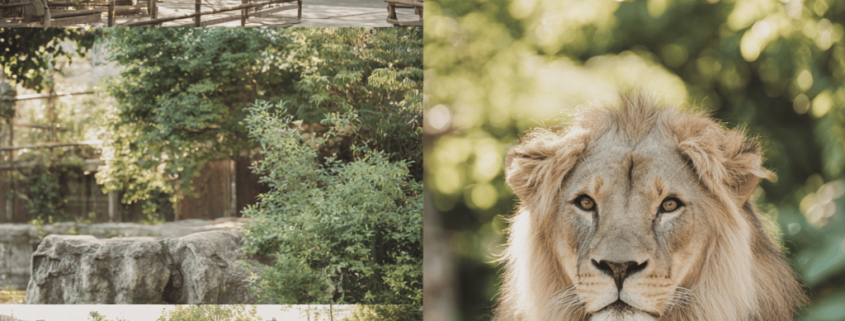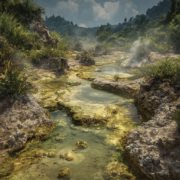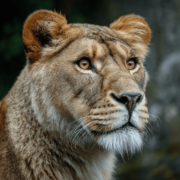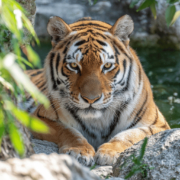Discover Austria’s Oldest Zoo: Inside Vienna’s 300-Year-Old Animal Paradise Where Pandas Meet Imperial History
Vienna’s crown jewel zoo sits like a perfectly orchestrated symphony in the heart of Austria’s capital, where the absurd meets the sublime in ways that would make even the most jaded traveler pause and consider the peculiar human obsession with observing captive animals. It’s the sort of place where one might find themselves simultaneously marveling at the engineering required to house a polar bear in a landlocked city and wondering if the bears ever dream of Arctic ice while lounging on artificial rocks.
The Vienna Zoo, or Tiergarten Schönbrunn as locals call it with the sort of Germanic precision that makes English speakers feel linguistically inadequate, sprawls across beautifully manicured grounds that seem to have been designed by someone who understood that watching animals requires a certain theatrical backdrop. The landscaping alone tells the story of humanity’s endless quest to make nature more natural than nature itself.
Visitors find themselves wandering through this curious collection of over 700 species, each more improbable than the last when considered in the context of Central European geography. There’s something delightfully absurd about watching majestic lions contemplate their existence while tourists snap photos with devices that cost more than most people’s monthly rent. The lions, for their part, seem to regard their audience with the sort of bemused tolerance typically reserved for distant relatives at holiday gatherings.
The animal feeding sessions represent perhaps the most democratically thrilling aspect of any zoo visit. These scheduled performances – and make no mistake, they are performances – draw crowds with the magnetic pull of a street magician, though infinitely more predictable. Visitors cluster around enclosures with the sort of anticipation usually reserved for sporting events, cameras at the ready, waiting for the moment when a keeper appears with a bucket of fish or a wheelbarrow of hay.
The genius of these feeding sessions lies not merely in their educational value, though keepers do dispense fascinating tidbits about dietary requirements and behavioral patterns with the enthusiasm of people who genuinely love their work. Rather, it’s the rare opportunity to witness animals engaging in their most fundamental activity – eating – without the pretense of “natural behavior” that zoos often try to manufacture.
Early arrival proves essential for securing optimal viewing positions, as these sessions attract the sort of crowds that would make a Vienna coffeehouse proud. The phenomenon speaks to something fundamentally human about our relationship with scheduled animal activities, as if we’re reassured by the knowledge that even in captivity, dinner time remains sacred.
The giant panda exhibit deserves particular mention, if only for the sheer diplomatic complexity it represents. These creatures, on loan from China through the sort of international negotiations that would make trade ministers weep, spend their days engaged in the monumentally important task of consuming bamboo while looking adorable. The pandas approach their celebrity status with admirable nonchalance, seemingly unaware that their mere presence represents millions of dollars in international agreements and zoo infrastructure.
Watching pandas at play – or more accurately, watching pandas methodically demolish bamboo stalks with the focused intensity of accountants during tax season – provides visitors with a meditation on the nature of contentment. Here are creatures who have mastered the art of doing very little while maintaining global superstar status, a lesson that perhaps more humans should embrace.
The petting zoo section reveals humanity’s enduring need for tactile connection with the animal kingdom, even if that connection comes in the form of slightly aggressive goats competing for handfuls of pellets. Children approach these encounters with the sort of fearless joy that adults spend decades trying to recapture, while parents hover nearby with sanitizer and cameras, documenting every moment of interspecies diplomacy.
The sheep, with their characteristic blend of curiosity and mild alarm, seem perpetually surprised by the attention they receive. Farm animals in zoo settings occupy a peculiar middle ground – familiar enough to be approachable, yet exotic enough in urban contexts to warrant inclusion in a day’s adventure. It’s a reminder of how far most of us have drifted from agricultural realities.
Navigation through the zoo requires comfortable footwear and a certain acceptance of the fact that no amount of planning will prevent the inevitable backtracking that occurs when one realizes the otters are performing their daily water ballet precisely when you’re examining the reptile house on the opposite end of the grounds. The zoo’s size transforms a simple animal-viewing expedition into a modest athletic endeavor, though one punctuated by frequent stops for ice cream and the sort of overpriced zoo photography that somehow seems reasonable in the moment.
For families and animal enthusiasts alike, the Vienna Zoo offers an experience that manages to be both educational and genuinely entertaining without feeling like homework disguised as fun. It’s the sort of place where adults find themselves reading informational plaques with sincere interest while children race from exhibit to exhibit with the focused intensity of museum curators on deadline.
The zoo succeeds in that peculiarly Viennese way of making the extraordinary seem effortless, as if housing Arctic foxes and tropical birds in the same geographic location is simply a matter of good planning and Austrian efficiency. Visitors leave with camera rolls full of animal portraits and heads full of random zoological facts, having spent a day in the company of creatures whose very presence in Vienna represents humanity’s endless capacity for ambitious impracticality.











